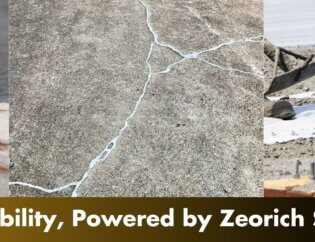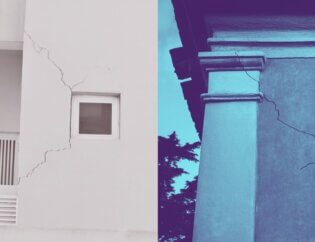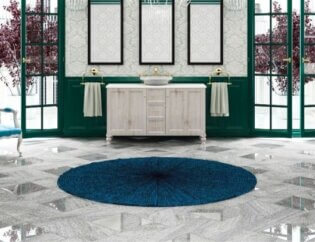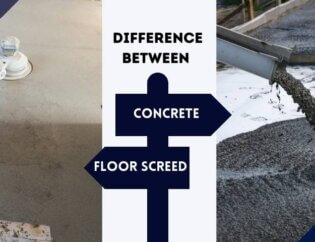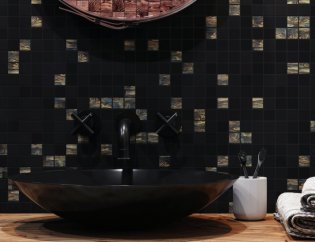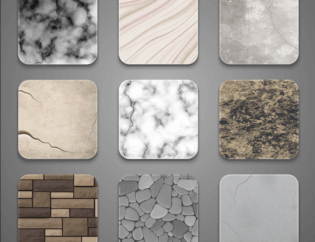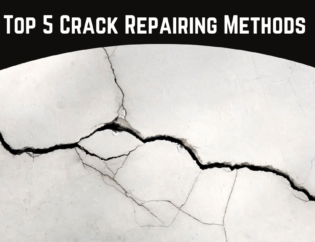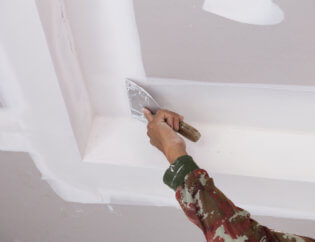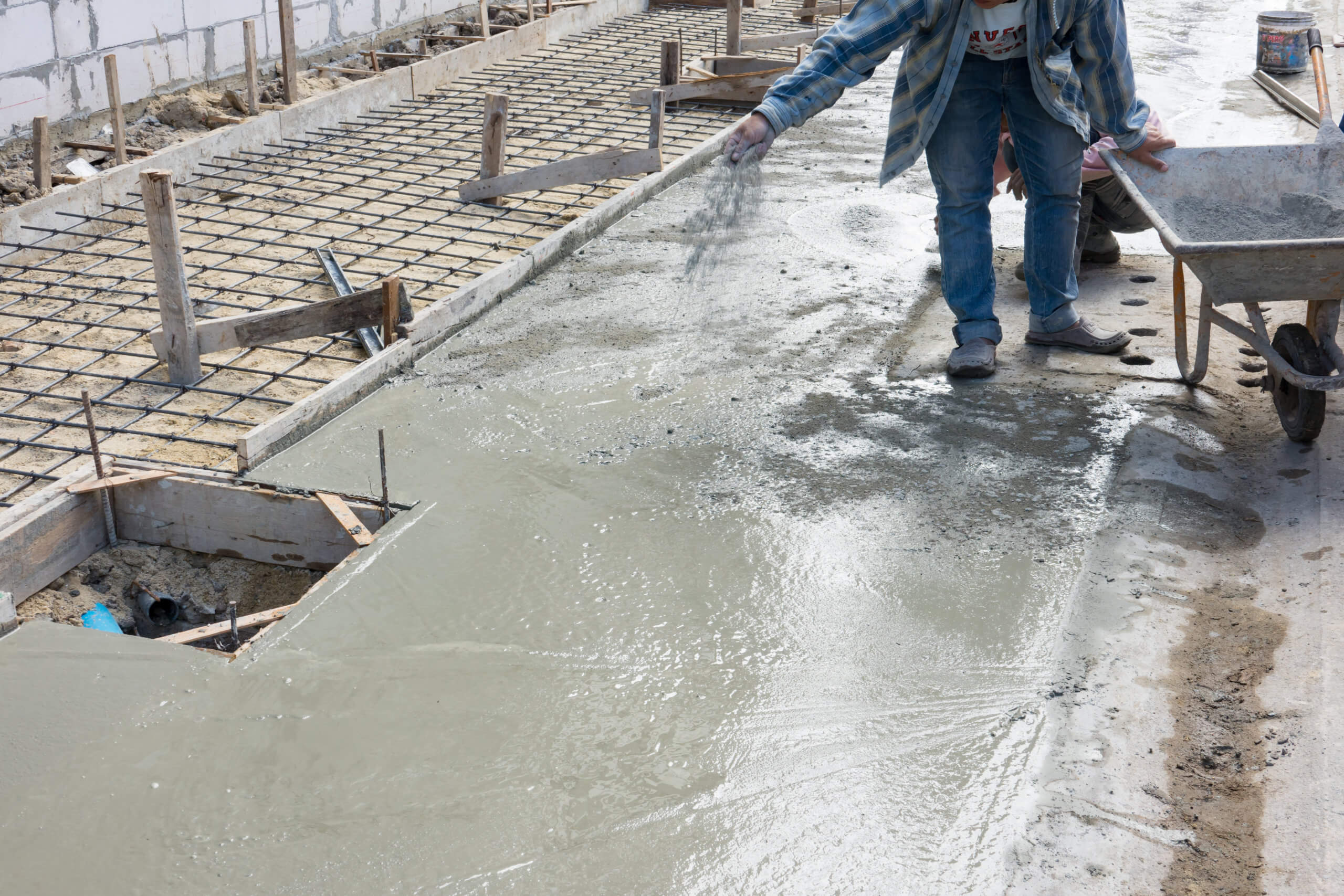
The concept of the floor screed must have occurred to a lot many people over the last few years especially if you have made the new flooring at your premises. The uneven flooring is a great concern to many people as a great many people are not very familiar with Floor screed or what it does. In this article, we have tried to explain the concept of floor screeding and its benefits.
The people who are not working in the construction industry or the people who are not qualified professional in the industry it becomes difficult for them to understand or identify the difference between concrete and floor screed as odd as its sounds both are made with same materials.
What is screed?
A floor screed is usually made of the same basic ingredients: cement, aggregates, water. The cement, however, has a much coarser mixer of large aggregates which gives it more strength and durability to the entire structure.
However, the size of aggregates used in the Screed is more in processed cementitious material made from a 1:3 or 1:4.5 ratio of cement to sharp sand, consistence aggregate size, mixing consistency is different sometimes additional additive is used in the screed as a lot of screeds comes as a proprietary product from the manufacturer.
Do not get confused with its ingredient the intended use of both materials are completely different the screed is usually used on a concrete structure in a thinner layer to give the base floor a smooth finish and strong foundation to the floor.
Different types of screed:
BONDED SCREED
Screed laid onto a precisely arranged substrate with the goal of augmenting potential bond using an extremely strong bonding agent or primer. This kind of screed is reinforced onto the substrate by slurrying clinging to the concrete substrate, this is the ideal sort of screed for more slender applications where heavy usage is envisioned. Bonded screed thickness can be from 15mm to 50mm depending on the end-use.
PARTIALLY BONDED
Partially bonded is screed is not as durable but is more affordable. To have the optimum result the partially bonded screed needs to be 50mm deep to make sure it does not break. This type of screed should be used on a coarser surface to have the best result. This screed is not directly bonded and is separated from the membrane.
Unbonded floor screed
As goes the name this screed is intentionally separated from the substrate by using a membrane. Unboned screeds are not reinforced directly to the base, yet applied to DPM/polythene laid on top of the solid base. The screed thickness can be obtained from the technical data sheet of manufacture as far as it goes should be greater than 50 mm thickness of standard screed.
Floating screed:
The floating screed is reinforced to a layer of insulation with a DMP over it. Usually, the screed is laid on a layer of insulation with a slip membrane which separates the screed from insulation.
Liquid Screeds:
This screed is usually used for the large areas as it requires some heavy tools to pump the liquid on the desired surface. Fluid consistency gives the accurate level and regularity to the surface.
Screeding tools:
Measure Tape: This is the smallest tool needed but most important to determine the measurement and depth of the room to know how much mixer needed in the structure.
100mm x 50mm timber battens – Needed to make the frame
Spirit level – to attain the correct level to the surface.
Shovel – To Load and mix and distribute.
Wheelbarrow or buckets – To process the mix from one place to other place quickly.
Straight edge (or a piece of excess timber) – To give Flat and smooth finish.
Trowel – This tool will help you move the paste in places where there is a need for an even surface.
Float – This tool is very useful to give the needed smooth finish to the surface.
Protection – as people should no that cement burns like anything on the skin so hand gloves and knee protection with the boots are a must in the entire operation.
Other tools: Heavy mixing machine, pump machine for liquid screed or another construction machine for big projects.
The Right screed mixing :
The screed mixing is important to process in the entire floor screeding operation, If the project is big in size we recommend using a professional contractor with the correct machinery and tools for a large operation. There are different opinion when it comes to the right ratio of screed mixing the best way to determine the correct ratio is to follow the technical data sheet if you are using ready to mix screeds if you are not using ready to mix than its advised to mix the screed in ratio 4:1 sand to cement or as per the depth and structure.
The screed can be mixed with other add-on additives for quicker drying time, thermal conductivity and higher strength, etc. to attention the desired result follows the technical data sheet of the product.
When choosing the ready to mix screed or on-site screed mixing its very important to consider the viability of location, transportation of heavy industrial machinery and equipment with manpower this factor will help you decide the mix whether to use ready to use or onsite mixing based on the above factor.
Tips: The best thing would choose the sharp sand and a good mix of grain size. Do not use uniform sand grain as they will not give strong bonding.
Site mixing of screed:
This is the most used and common practice of larger-scale projects as this gives efficiency and is economical. This method is recommended to use forced action mixed screed and should be handled by the qualified workforce.
Note: Top 3 methods by screeders used for site mixing
Hand Mixing: This method is recommended for small-scale operation as this is only suitable for small areas not for huge projects wok in this method is strenuous there can be human error in mixing which intern affect the quality of the screed.
Free Fall Mixers: Freefall mix is not the most popular method of screeding however it's used by a lot of people when there is a large quantity of material available at the site. The consistency of the mix can affect the quality if the structure is not mentioned properly.
Forced Action Mixers: This is the most popular and used screed mixing technique used by screeders all across the industry. Forced action mixing produces high-quality screed on site with the most economic and efficient value to the contractors. This method blends the cement and mix homogeneously and is ideal for mixing additives for other desired results.
There is 2 subtype in forced action mix.
i) Screed Pumps: Screed pump produces a large quantity of screed at the site. The pump is most commonly used at the large site and big project as this method provide stable result and the mix come evenly as per the needed areas.
ii) Pan mixers: The Second most common forced action mix is pan mixing where the heavy equipment is less likely to be used due to the limitation of location and heavy equipment is difficult to operate.
Ready Mix Screeds Ready to use screeds are the best available option at the site as you don’t need very heavy equipment to mix but the result will be consistent throughout the process as the element to be used are predefined. The ready to mix screed can be very helpful in a small operation like a residential project, an area difficult to operate big machinery, etc, Ready to mix screed is a proprietary product from different manufacturers as they offer a lot more to the structure depending need of users such as quick-drying, Strong bonding primer, Feasibility to add more additives for other results.
Tip: Remember you can add as much additive or other material you want to the mix but you can not take it out so be very careful.
Lets do the important checks first:
There are few important checklist points which you need to follow in sequential manner to achieve the most optimum result of screeding.
- Check the specification is fit for purpose
- Make sure the substrate is ready to receive the screed.
- Check the access and egress is suitable for screed installation, plant and materials.
- Check the building is watertight.
- Check the datum levels, record the measurement down to finished screed level to ensure minimum and maximum depths are achievable and compliant with tendered nominal allowance.
- Check that running potable water is available at an adjacent point of the material location.
- Check that a waste facility is adjacent to the working areas.
- Check the mixing plant is safe and suitable to use.
- Mix the screed in the correct proportion.
- Apply the screed in a sequential manner, avoiding dry joints.
- Apply trowel cuts where necessary for crack control.
- Keep the working area tidy.
Screeding the floor:
Now you have all the checklist done and screed is ready to be used.
This is most important step in the entire process of screeding. We will have to start pouring the mix into the frame or structure in steady manner, you need to achieve the desired depth recommended for the structure to give the maximum strength and durability. Once you have poured all the screed to the surface make sure you have achieved the even distribution in all process if some place is prone to crack give nice trowel touch with mix to make sure you have necessary preparation in advance. Use the right tool to check the level is perfect usually this job should be done with right contractor.
Protecting the screed floor:
The first thing you need to do once you completed the floor screed process and the mix it on the surface is to put up the polythene sheet on the surface nicely to make the moisture remains entirely inside and aid the curing process. If the protector sheet is not installed make sure you provide enough water to the installation to have the needed moist so the surface does not crack.
Restrict all kind of movement and traffic for the next 48 hour or longer after the installation of the floor screed
Restrict the heavy traffic until the final flooring is complete.
Make sure you consult the structural engineer or architect before allowing the heavy movement.
